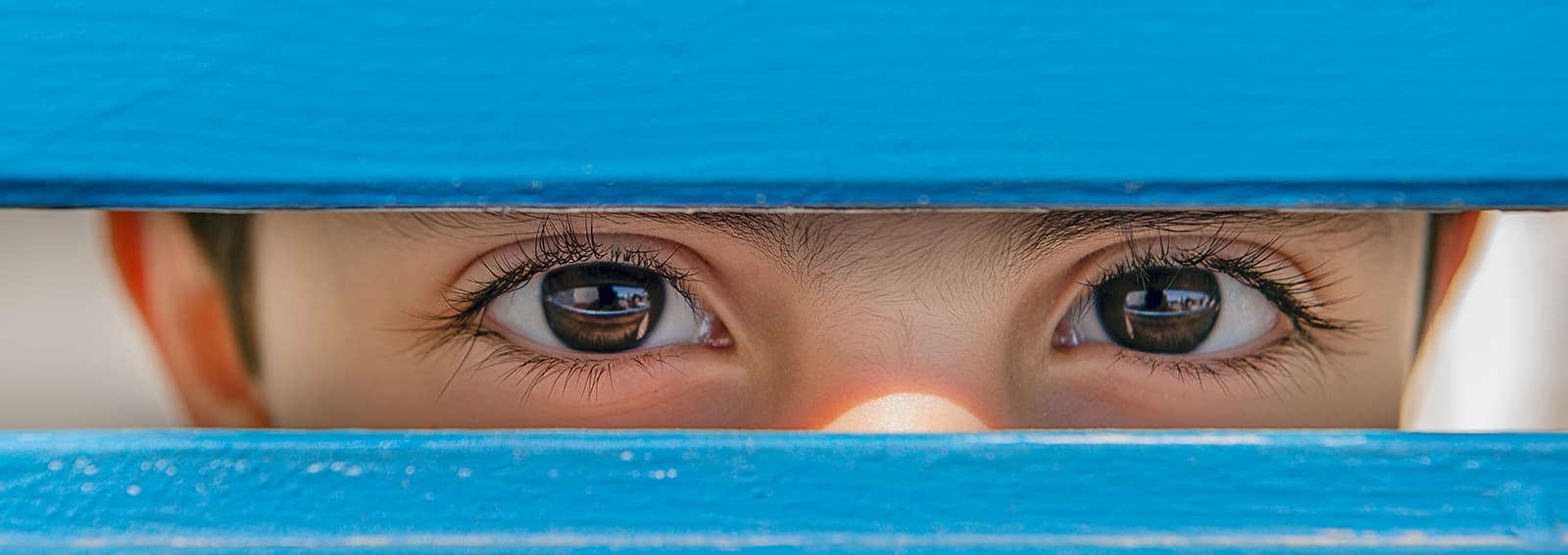Strabismus
Strabismus (crossed eyes) is a common pediatric eye condition, and it affects between 2-4% of children.1 With a timely diagnosis and proper treatment by a pediatric ophthalmologist like Dr. Lucas Bonafede, it is possible to minimize or prevent eye damage from strabismus.
What is Strabismus?
Strabismus is often thought of as crossed eyes, but in truth it is any misalignment of the eyes. For example, the eyes may be crossed, or one eye may look up, down, in, or out. Eye misalignment can shift between the eyes.
What Causes Strabismus?
Eye movement and position are controlled by six muscles which are controlled by the brain. In most cases, it is the way the brain communicates with the eye muscles that causes strabismus, not a problem with the muscles themselves. In most cases, there is not an underlying cause for strabismus. However, certain disorders can be associated with strabismus, such as:
- Down syndrome
- Cerebral palsy
- Brain tumor
- Premature birth
- Hydrocephalus (excess brain fluid)
- Pediatric cataracts
- Eye injury2
- Previous eye surgery
- Retinoblastoma

Can Strabismus Affect Vision?
Strabismus can impact a child’s vision, since proper vision relies on both eyes focusing on the same spot together. This may lead to poor depth perception or double vision. Misalignment from strabismus can also lead to amblyopia, a condition where the misaligned eye has weaker vision.

Strabismus Symptoms
The most common sign of strabismus is when a child’s eyes look in different directions. In some cases, a child may tilt his or her head or close one eye when attempting to focus. Squinting with only one eye in bright sunlight is another symptom of strabismus.
Types of Strabismus
There are many types of strabismus, but three are more common than others. They are:
- Esotropia: When one or both eyes turn inward
- Exotropia: When one or both eyes turn outward
- Hypertropia: Vertical misalignment of the eyes
- Cyclotropia: When the eye is twisted clockwise or counter-clockwise
Treatment for Strabismus
Treatment for strabismus in children is most effective when the condition is diagnosed early. The goal of strabismus treatment is to improve the alignment of the eyes so that they work better together. This may involve eyeglasses, eye patches, prisms, or surgery on the eye muscles.3
Contact Fraser Eye Care
If you notice that your child’s eyes look in different directions at the same time or do not line up, the cause may be strabismus. At Fraser Eye Care in Detroit, Dr. Bonafede has extensive experience in treating strabismus and other pediatric eye problems, and can help your child see more clearly. To schedule a consultation, please contact us today.
Ready to Schedule an Appointment?
Book Online Sources
Sources
1 Boston Children’s Hospital. Strabismus and Amblyopia. Available: https://www.childrenshospital.org/conditions-and-treatments/conditions/s/strabismus-and-amblyopia. Accessed September 21, 2021.
2 American Academy of Ophthalmology. Strabismus in Children. Available: https://www.aao.org/eye-health/diseases/strabismus-in-children. Accessed September 21, 2021.
3 American Association for Pediatric Ophthalmology and Strabismus. Strabismus. Available: https://aapos.org/glossary/strabismus. Accessed September 21, 2021.
Dr. Lucas Bonafede has either authored or reviewed and approved this content.

